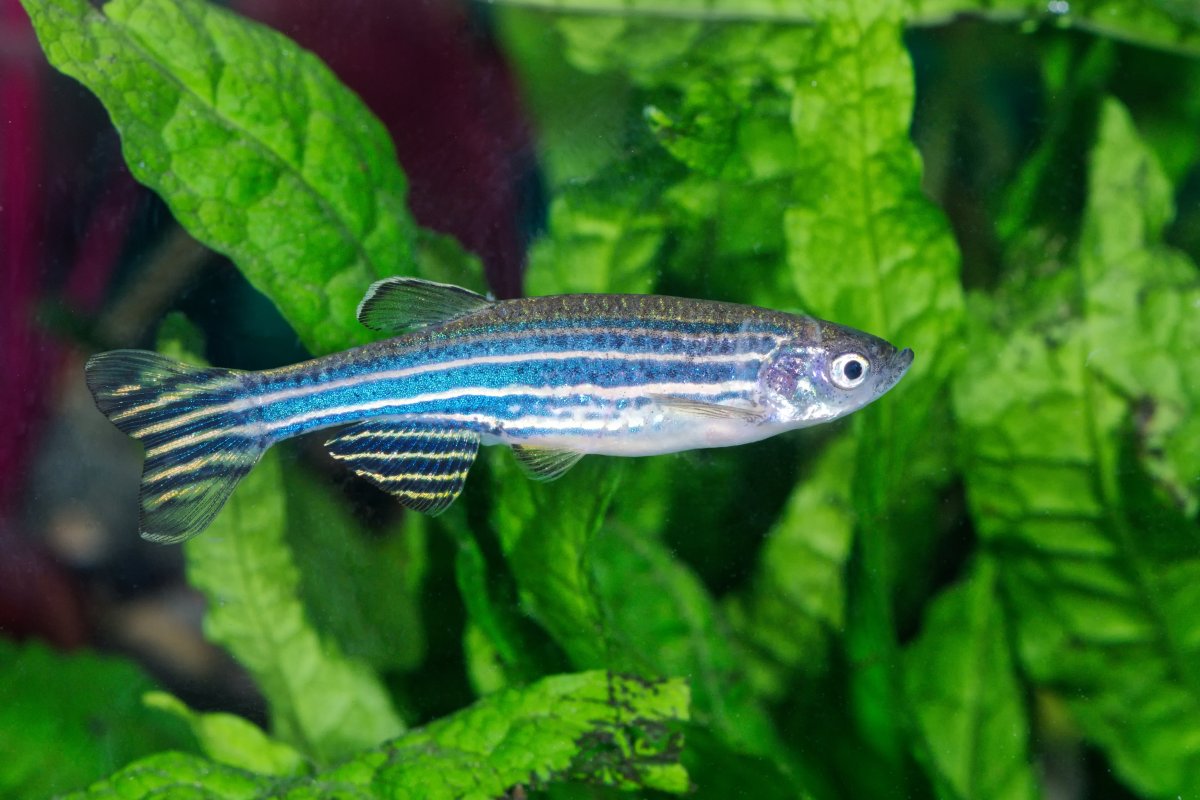Fish genetically modified to glow different colors have escaped farms in Brazil and could disrupt biodiversity in the country's Atlantic Forest region.
A new study published in Studies on Neotropical Fauna and Environment examined the presence of so-called "transgenic" zebrafish in south-eastern Brazil and found the animals reproducing in waters close to nearby fish farms.
Transgenic zebrafish are bred with tailored genes that can give them various characteristics—in this case, a glowing effect under certain light conditions. The genetically engineered animals are popular in aquariums and on the commercial fish market, with glowing zebrafish even trademarked as a commercial product called Glofish.
Yet while the fish are bred in captivity, including in south-eastern Brazil, some have managed to escape into the surrounding countryside and take their genetically engineered genes with them.
"They are in stage 1 of the biological invasion process: feeding on the resources available in the creeks and reproducing," study author André Magalhães from the Federal University of São João told Newsweek.
The scientist said that the species has the potential to become invasive and disrupt the ecosystems of the Atlantic Forest because they feed on insects that help balance ecology in region.
Magalhães and his colleagues who worked on the paper studied the biology of the animals at the headwater creeks near an ornamental aquaculture center in Muriaé, north of Rio. The fish are farmed there and researchers suspect the animals escaped their commercial confinement.
They reported that the animals were thriving in the area. Their diet included aquatic insects, while the animals were found to be breeding too. "Breeding females and males were found at small body sizes, indicating early maturation," one line from the paper said.
Zebrafish are native to southeast Asia and have been popular with geneticists since the 1990s, with various attributes—including an externally developing embryo—making them popular choices for scientists studying gene analysis and manipulation.
Zebrafish made to glow different colors shot to prominence as a commercial success recently, with breeders including the Glofish company marketing them as an attractive addition to aquariums. Typical zebrafish are modified by scientists who added genes from glowing animals like jellyfish or coral to make the fish luminescent in the same way.
Their presence on the edge of one of Brazil's most biodiverse regions in the Atlantic Forest is now of concern because if glowing zebrafish succeed in spreading further they could disrupt finely balanced ecosystems nearby.
"Management strategies are suggested to prevent new transgenic zebrafish introductions in the near future: Diminish or cease escape events from fish farm facilities through the installation of simple devices (i.e. anti-escape nylon screens, sleeve filters) in the water outlets of production ponds," Magalhães said.

Uncommon Knowledge
Newsweek is committed to challenging conventional wisdom and finding connections in the search for common ground.
Newsweek is committed to challenging conventional wisdom and finding connections in the search for common ground.
About the writer
To read how Newsweek uses AI as a newsroom tool, Click here.






